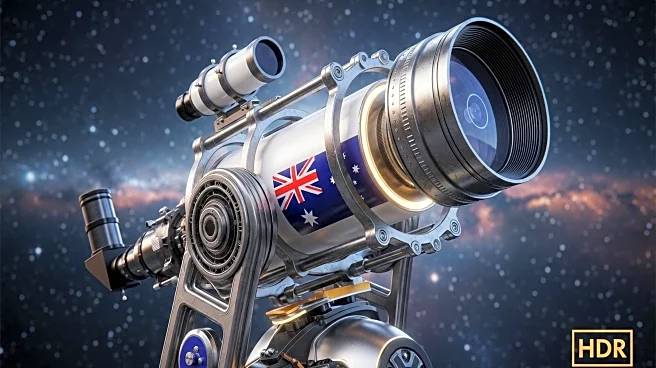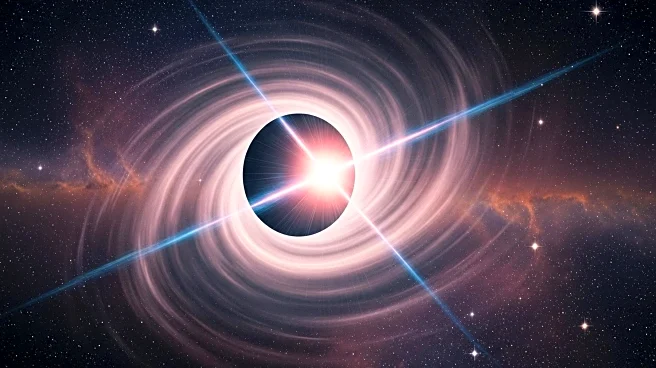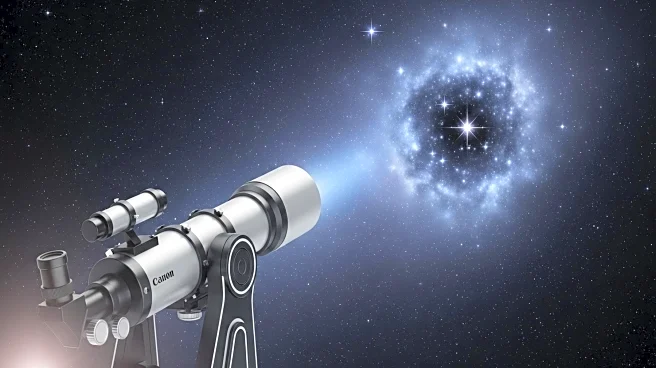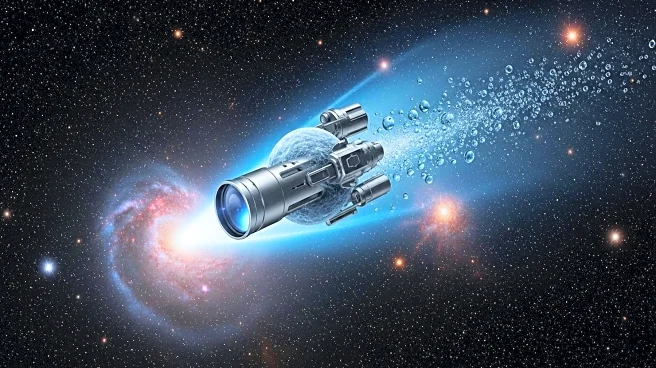What's Happening?
The James Webb Space Telescope, launched by NASA in 2021, has undergone significant enhancements thanks to the efforts of an Australian team. The telescope, which cost US$10 billion, represents a major advancement in space observation technology since the Hubble Telescope's launch in 1990. The Australian team utilized the aperture masking interferometer (AMI), a high-resolution mode, to improve the telescope's vision. This device, a precisely machined metal piece, was designed to diagnose and measure any blurring in Webb's images, caused by distortions in its mirrors and internal surfaces. The team successfully corrected these distortions, allowing for clearer observations of stars, planets, moons, and black hole jets. Their findings have been published in the open-access archive arXiv, showcasing the first successful observations using AMI.
Why It's Important?
The enhancements made to the James Webb Space Telescope are crucial for advancing our understanding of the universe. By correcting image blurring, the telescope can now observe distant planets and cosmic phenomena with unprecedented clarity. This improvement is significant for astronomers and researchers who rely on high-resolution images to study the birthplaces of planets and material being sucked into black holes. The ability to detect faint planets and other celestial bodies opens new possibilities for discovering Earth-like planets and understanding the formation of galaxies. The success of the Australian team's efforts demonstrates the importance of international collaboration in space exploration and the potential for technological advancements to overcome challenges in observing distant cosmic events.
What's Next?
The successful implementation of the aperture masking interferometer on the James Webb Space Telescope paves the way for future advancements in space observation technology. The techniques developed by the Australian team could be applied to more complex cameras on Webb and its successor, the Roman Space Telescope. These tools require optical calibration at a fraction of a nanometer, beyond the capacity of current materials. The team's work shows that with precise measurement and correction, it is possible to explore distant galaxies and potentially discover Earth-like planets. Continued research and development in this area will likely lead to further breakthroughs in understanding the universe.
Beyond the Headlines
The work done by the Australian team highlights the ethical and cultural dimensions of international collaboration in space exploration. The ability to enhance the James Webb Space Telescope's vision without physical intervention demonstrates the power of remote technology and innovation. This achievement underscores the importance of investing in scientific research and fostering global partnerships to address complex challenges. The advancements made in observing distant cosmic phenomena could also inspire future generations to pursue careers in science and technology, contributing to a deeper understanding of our universe.











